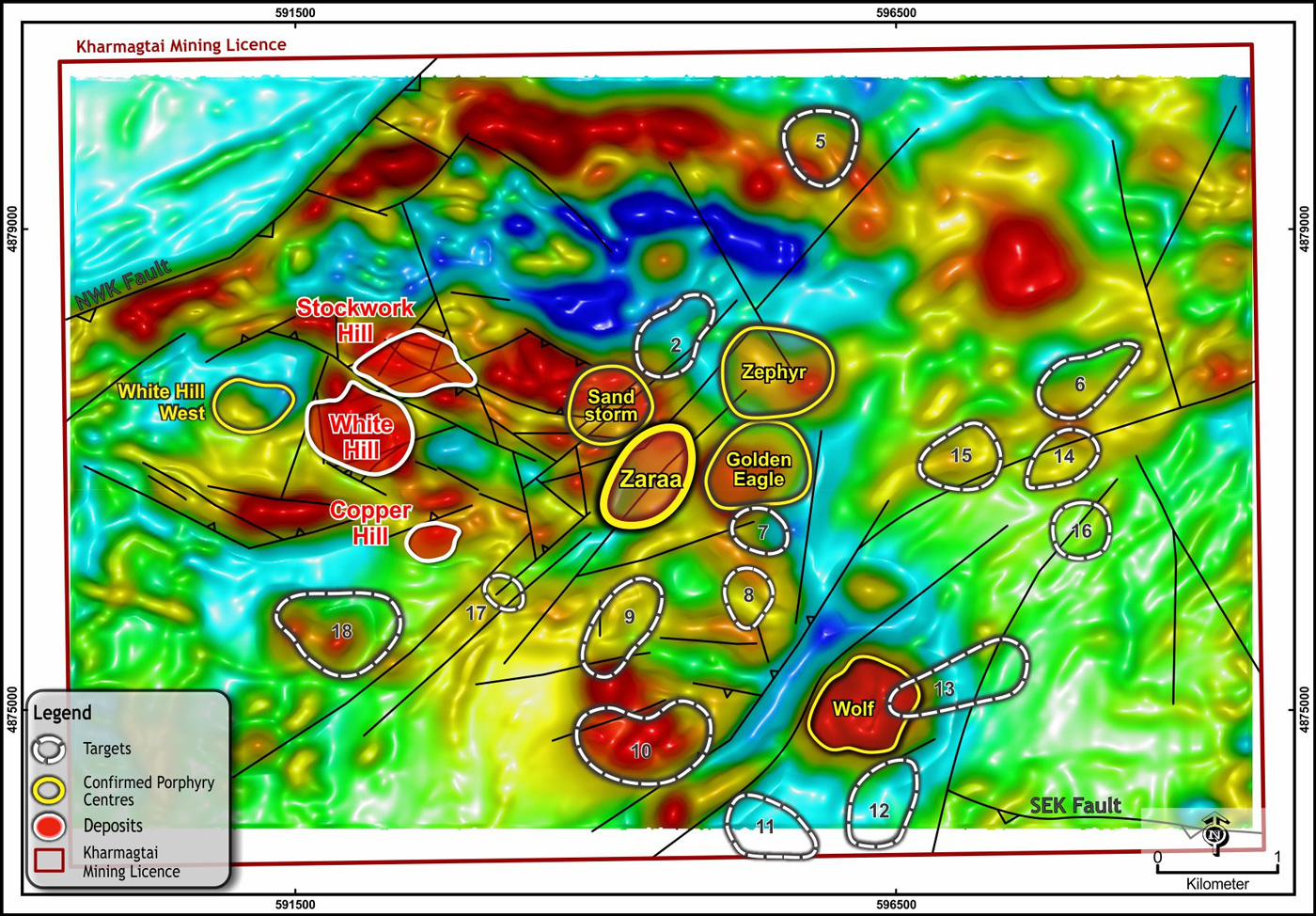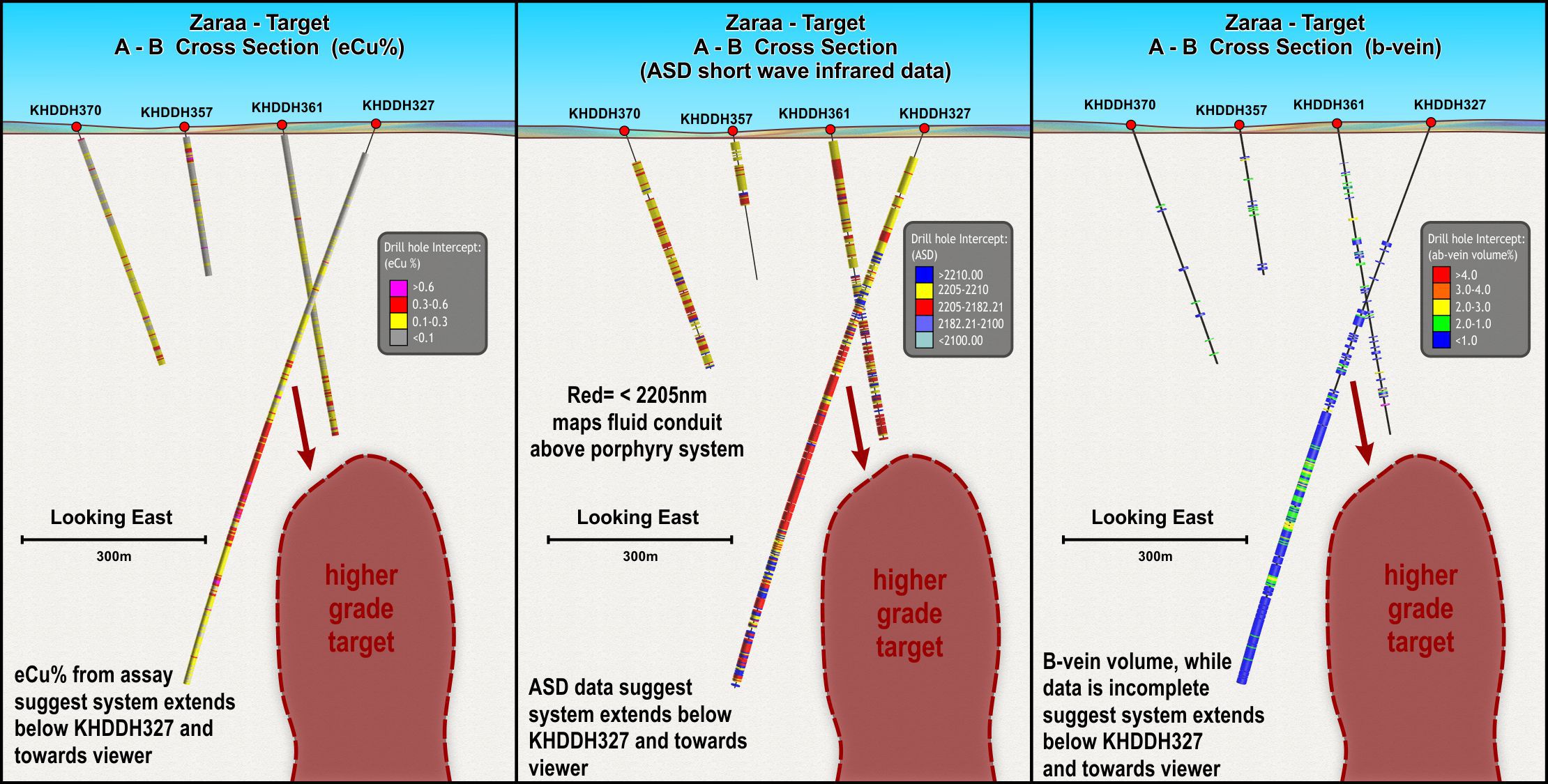
Projects
Zaraa Discovery
Zaraa is a blind discovery made in April 2018, beneath 22m of post mineral sediment approximately 2km east of the three outcropping porphyry resources at Kharmagtai.

A review of previous drilling in early 2018 identified a diamond drill hole by Asia Gold Corporation in 2011 which contained a broad interval of low-grade Cu-Au mineralization associated with low density porphyry veining (1-2 veins/meter). This drill hole was presumably targeting a very large (1km by 0.5km) IP chargeability anomaly beneath shallow cover.
This led to a review of all nearby drilling and when the downhole geochemical data, b-vein density data, alteration logging and ASD spectral data was combined a compelling picture of a large-scale porphyry deposit emerged, below and southwest of the Asia Gold drill hole.

Drill hole KHDDH462 was targeted at this conceptual porphyry target, entered porphyry mineralization at 458m downhole and was terminated within moderate grade porphyry mineralization at 1386.4m due to drill rig capacity.

To date five diamond drill holes have been drilled into Zaraa defining a zone of mineralization roughly 1km by 600m by 400m which is open along strike and at depth. Further drilling is planned to allow an initial resource estimation to be completed.
Zaraa represents a significant new discovery with the potential to expand into another giant Cu-Au porphyry like Oyu Tolgoi. All drilling data suggest that mineralization drilled to date is peripheral to a much larger porphyry system.

Multiple phases of porphyry b-veining create a network of high-density veining. Fine grained chalcopyrite forms within centrelines to the b-veins and disseminated throughout the quartz vein fill. The host rock diorite is strongly altered (potassic with retrograde sericite).
Image is full width HQ core and 6.35cm high.

Multiple phases of porphyry b-veining create a network of high-density veining. Fine grained chalcopyrite forms within centrelines to the b-veins and disseminated throughout the quartz vein fill. The host rock diorite is strongly altered (potassic with retrograde sericite).
Image is full width HQ core and 6.35cm high.

Fine high-density quartz-magnetite m-veins cross cut by centreline quartz sulphide b-veins and overprinted by late chalcopyrite c-veins. The host diorite is altered by secondary biotite replacing hornblende and pale green sericite.
Image is full width HQ core and 6.35cm high.

Mineralised uni-solidification textures “UST’s”. UST’s form at the top of fractionating magma chambers where elements not being sequestered into the crystallising minerals collect in the remaining fluids (e.g. Cu-Au). Mineralised UST’s are not uncommon at Kharmagtai.
Image is full width HQ core and 6.35cm high.

Epithermal breccia’s cross cut Zaraa utilising early structures and overprinting the porphyry mineralisation. These zones often contain elevated lead and zinc and can be categorised as carbonate base metal epithermal veins.
Image is full width HQ core and 6.35cm high.